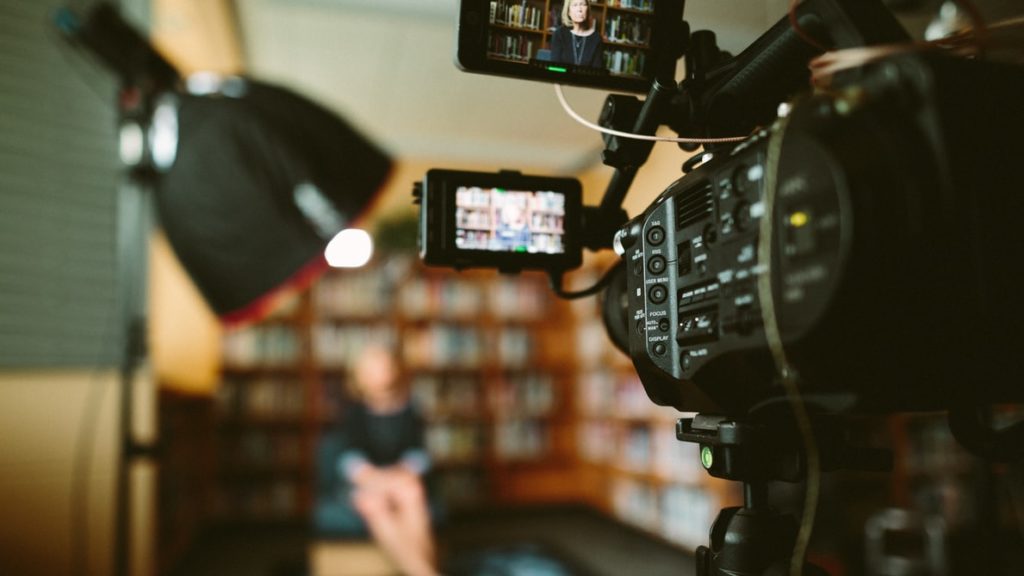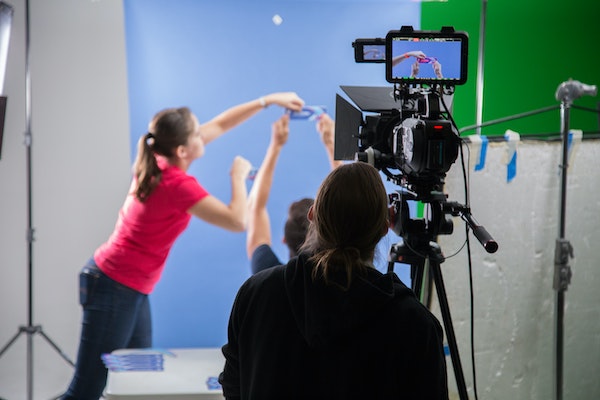
These days, the great thing about creating videos is that anyone can do it! That said, it’s always good to invest in a little upskilling. In this blog post, we’ll be looking at cutaway shots — what they are, as well as when and how to use them — with easy examples like B-roll, product shots, role play, process shots and the use of backgrounds to help your videos stand out.
Ready to master the art of cutaway shots? Great — let’s get started!
What is a cutaway shot?
For a cutaway definition, cutaways are supplementary shots that ‘cut away’ from the main shot (e.g. an interview) to another shot, typically to a visual of whatever the speaker is talking about. This interruption of a continuous shot then cuts back to the main shot. Cutaways have the effect of offering viewers more context than a single shot of someone speaking, using alternative footage that’s paired with voiceover.
Are cutaways the same as B-roll? Just what is B-roll and how is it used, anyway? For a B-roll definition, think of it like this — B-roll is footage of the main scene (let’s go with the interview example we used above) filmed on a ‘B’ camera (e.g. from a different angle) , where the ‘A’ camera is focused on the main shot (e.g. the interview). Examples of B-roll shots are things like reaction shots of the interviewer, B-roll video to show setting, or a close-up shot of the interviewee. etc. While B-roll is technically different to a cutaway shot, some people do use them interchangeably — so it’s good to be familiar with both terms.
How to use cutaway shots
Cutaway shots aren’t just good for context, tone and keeping things interesting. They’re essential to video editors in post-production when it comes to patching mistakes in primary footage, shaping story, emphasising key messages and generally ensuring a video does its job: to engage viewers. Cutaways are also integral to the process of cutting to continuity, as we’ll see below.
Continuity and why it’s essential for cutaways
In film and TV, continuity is ensuring different shots cut together maintain a realistic sense of time and space, without confusing or disorienting viewers. When done well, audiences shouldn’t notice cuts between shots in a scene because the details shouldn’t change, and the viewing experience should feel naturally seamless.
This is just as important in corporate video, especially for B-roll. If your audience is distracted by a change in hairstyle or wardrobe between shots, they’ll be too busy dissecting it to register your message — so if you’re filming across multiple days, keep your outfits similar; same with backdrops for sets. Consistency across camera settings is another one to watch for more polished content, as things like image quality between different cameras can vary (even for the same resolution).
Examples of cutaway shots
B-Roll
You can shoot B-roll footage like different perspectives of your main shot, or even supplementary shots from behind the scenes. Capturing B-roll also involves looking for interesting shots on location e.g. close-ups of inanimate objects or audience shots at events, so don’t be afraid to experiment; a rule of thumb is to aim for about 10 seconds for each shot. Good B-roll should give your editor enough material to not only weave a story to visualise speech — but also get a little creative.

Product Shots
Cutaway shots of products during a piece to camera or 1-person interview are an effective way to give visual context. This can include shots like close-ups of the products themselves, as well as demonstrations of how to use them e.g. a shot of a chef talking about a new knife, then a close-up cutaway of the chef using that knife to chop ingredients.
Here’s an example of how we used product shots as cutaways:
Situations and Role Play
For situational and role play cutaways, the goal is to visualise what you’re talking about — so, if your script covers how to approach customers in a sales interaction, for example, then have a role play clip or stock footage conversation to cut away to. Or maybe it’s a customer testimonial, in which case, you could film that person in situ using your product or demonstrating the experience they’re describing step by step, and cut to that.
Here’s an example of how we used role play shots as cutaways:
Process Shots
With product shots, process cutaways help ground a speaker’s content in reality when it’s process-related. A good example is a video of a CEO talking about the company’s production line, then cutting to shots from the factory where this takes place, as well as showing a few steps in that actual process to help reiterate key points covered.
Here’s an example of how we used process shots as cutaways:

Background
Cutaways like background shots are icing on the cake, in that they’re not integral to your video, but can add to its overall polish (and can often be reused later). Think wide shots at events, building exteriors or even establishing shots of the city you’re filming in. This footage can help set the scene and add to your content’s overall mood and tone, especially at the start or end of a video; you’ll also see these sorts of shots bridging multiple interviews in the same video.
Here’s an example of how we used background cutaways:

You’ll soon find there are a million and one creative ways to use cutaway shots in video production, making them a valuable multitool in your video utility belt.
Our biggest tip: when planning your script, think about what cutaways you might like to use — both pre-existing and brand new — and make sure to include them in your shot list during pre-production. In addition, if you see something on the day that captures your interest, film it! Don’t be afraid to try new things, because if you ask an editor, they’ll always tell you the more cutaways you can give them, the better when it comes to perfecting your video content.


